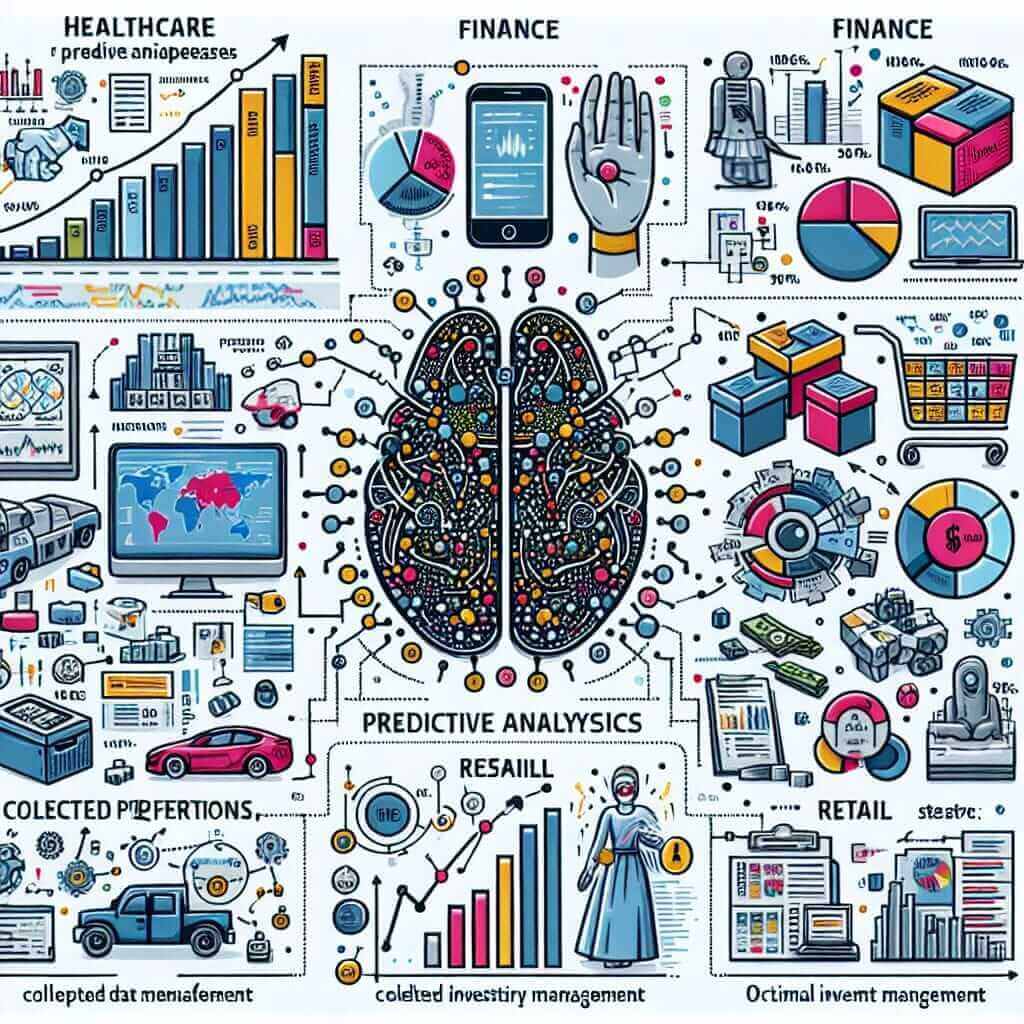The IELTS Reading section tests a wide range of reading skills and comprehension abilities. In recent years, there has been a growing interest in topics related to artificial intelligence (AI) and its applications, making it a popular subject in academic and real-world contexts. One such topic is “How is AI being used in predictive analytics?” This subject is important not only for its relevance in the technology sector but also for its potential to be featured in future IELTS exams. This article aims to provide a comprehensive understanding and practice opportunity for IELTS Reading through a detailed exploration of this topic.
Predictive Analytics and AI
Predictive analytics is a branch of advanced analytics that uses data, statistical algorithms, and machine learning techniques to identify the likelihood of future outcomes based on historical data. Artificial Intelligence enhances these capabilities by offering more accurate and sophisticated models for data analysis. Below, we provide a detailed reading passage along with relevant questions to help you practice and understand how AI is transforming predictive analytics.
IELTS Reading Practice Test
Passage
Predictive analytics has evolved rapidly due to the integration of artificial intelligence. AI-driven predictive analytics leverages various technologies, including machine learning algorithms, to analyze vast amounts of data more efficiently. This powerful combination enables organizations to predict future trends, customer behaviors, and potential risks with greater accuracy.
Machine Learning, a subset of AI, is at the heart of this transformation. Traditional predictive analytics relied on statistical methods and human expertise; however, machine learning algorithms can process larger datasets and identify patterns that may be invisible to the human eye. These algorithms learn from data inputs and improve their predictions over time, becoming more precise and reliable.
One of the notable applications of AI in predictive analytics is in the healthcare sector. AI-driven predictive models can forecast disease outbreaks, patient admissions, and treatment outcomes. For instance, by analyzing historical patient data, healthcare providers can predict which patients are at higher risk of developing chronic diseases, thereby enabling early intervention and tailored treatment plans.
Another significant application is in finance. Financial institutions use AI-powered predictive analytics to detect fraudulent activities, assess credit risks, and forecast market trends. These insights help in making informed decisions, reducing losses, and optimizing investment strategies.
In retail, predictive analytics powered by AI helps businesses understand consumer behavior, manage inventory, and personalize marketing campaigns. By analyzing past purchase data, AI can predict which products a customer is likely to buy, enabling targeted advertisements and promotions.
Despite its impressive capabilities, the use of AI in predictive analytics is not without challenges. Data privacy concerns, algorithmic biases, and the need for large amounts of high-quality data are significant hurdles that must be addressed. As technology advances, ethical considerations and regulations will play a crucial role in shaping the future of AI-driven predictive analytics.

Questions
Multiple Choice
-
What is one of the key advantages of AI in predictive analytics mentioned in the passage?
a. Reduction in technology costs
b. Ability to process smaller datasets
c. Enhanced accuracy and sophistication in data analysis
d. More human intervention in predictive models -
How does AI-driven predictive analytics benefit the healthcare sector?
a. By reducing the need for medical equipment
b. By forecasting disease outbreaks and patient admissions
c. By eliminating the need for medical professionals
d. By increasing hospital costs
True/False/Not Given
- AI-driven predictive analytics can identify patterns in data that humans may miss.
- The use of AI in predictive analytics is limited to the financial sector.
- Data privacy concerns are not a challenge for AI-driven predictive analytics.
Answer Keys
-
c. Enhanced accuracy and sophistication in data analysis.
- Explanation: The passage highlights how AI-driven predictive analytics offers more accurate and sophisticated models for data analysis.
-
b. By forecasting disease outbreaks and patient admissions.
- Explanation: The passage provides examples of applications in healthcare where AI-driven predictive models forecast disease outbreaks and patient admissions.
-
True.
- Explanation: The passage states that machine learning algorithms can identify patterns that may be invisible to the human eye.
-
False.
- Explanation: The passage mentions the application of AI-driven predictive analytics in healthcare, finance, and retail sectors.
-
Not Given.
- Explanation: Although the passage mentions data privacy concerns as a challenge, it does not state that these concerns do not exist for AI-driven predictive analytics.
Lesson
Common pitfalls in the Reading section often stem from misinterpreting the questions or the passage. When practicing:
- Make sure to read questions carefully and understand what is being asked.
- Cross-check the provided answers with the passage context to ensure they align accurately.
Vocabulary
- Predictive Analytics (noun): /prɪˈdɪktɪv əˈnælɪtɪks/ – The practice of using data to predict future events.
- Algorithm (noun): /ˈælɡərɪðəm/ – A process or set of rules to be followed in problem-solving operations, usually by a computer.
- Chronic (adj): /ˈkrɒnɪk/ – (Of an illness) persisting for a long time or constantly recurring.
Grammar
- Past Participle: The past participle form of a verb is often used in passive voice constructions and perfect tenses.
- Example: “The data was analyzed by the algorithm.”
Conclusion
To excel in the IELTS Reading section, consistent practice with diverse passages is crucial. Understanding topics like “How is AI being used in predictive analytics?” can offer valuable insights and improve your reading skills. Additionally, focus on building your vocabulary and grammatical accuracy to maximize your performance.
Best of luck with your studies and remember, regular practice is key to success in the IELTS exam!